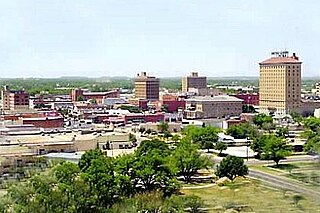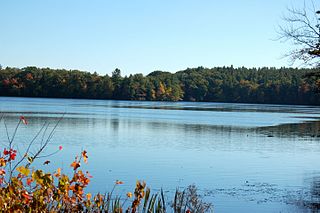| Abbreviation | UCRA |
|---|---|
| Formation | 1935 |
| Type | Government-owned corporation |
| Purpose | Water conservation |
| Headquarters | 512 Orient St., San Angelo, Texas, 76903 |
Region served | Concho, Coke, Schleicher, and Tom Green Counties in Texas |
Chairperson | Jeffie Roberts |
Main organ | Board of Directors |
| Website | http://www.ucratx.org/ |
The Upper Colorado River Authority or UCRA was created in 1935 by the Texas Legislature as a quasi-governmental entity to manage the Colorado River as a water resource in Tom Green County and Coke County, Texas. [1] The authority has since been extended to include Schleicher County and Concho County. The organization is managed by a nine-person Board of Directors appointed to six-year terms by the Governor of Texas. [2]

The Legislature of the state of Texas is the state legislature of Texas. The legislature is a bicameral body composed of a 31-member Senate and a 150-member House of Representatives. The state legislature meets at the Capitol in Austin. It is a powerful arm of the Texas government not only because of its power of the purse to control and direct the activities of state government and the strong constitutional connections between it and the Lieutenant Governor of Texas, but also due to Texas's plural executive.

The Colorado River is an 862-mile (1,387 km) long river in the U.S. state of Texas. It is the 18th longest river in the United States and the longest river with both its source and its mouth within Texas.

Tom Green County is a county located on the Edwards Plateau in the U.S. state of Texas. As of the 2010 census, its population was 110,224. Its county seat is San Angelo. The county was created in 1874 and organized the following year.
Contents
The UCRA has served as a lending institution, offering loans to municipalities in its served district for water management projects. The authority also participates in the Clean Rivers Program, and other environmental programs of the state of Texas. In 2008, the UCRA began construction in San Angelo of the Concho River Basin Education and Research Center, which offers educational programs to schoolchildren about water use and conservation. [3]

Public finance is the study of the role of the government in the economy. It is the branch of economics which assesses the government revenue and government expenditure of the public authorities and the adjustment of one or the other to achieve desirable effects and avoid undesirable ones.

San Angelo is a city in and the county seat of Tom Green County, Texas, United States. Its location is in the Concho Valley, a region of West Texas between the Permian Basin to the northwest, Chihuahuan Desert to the southwest, Osage Plains to the northeast, and Central Texas to the southeast. According to a 2014 Census estimate, San Angelo has a total population of 100,450. It is the principal city and center of the San Angelo metropolitan area, which has a population of 118,182.

Water conservation includes all the policies, strategies and activities to sustainably manage the natural resource of fresh water, to protect the hydrosphere, and to meet the current and future human demand. Population, household size, and growth and affluence all affect how much water is used. Factors such as climate change have increased pressures on natural water resources especially in manufacturing and agricultural irrigation. Many US cities have already implemented policies aimed at water conservation, with much success.















